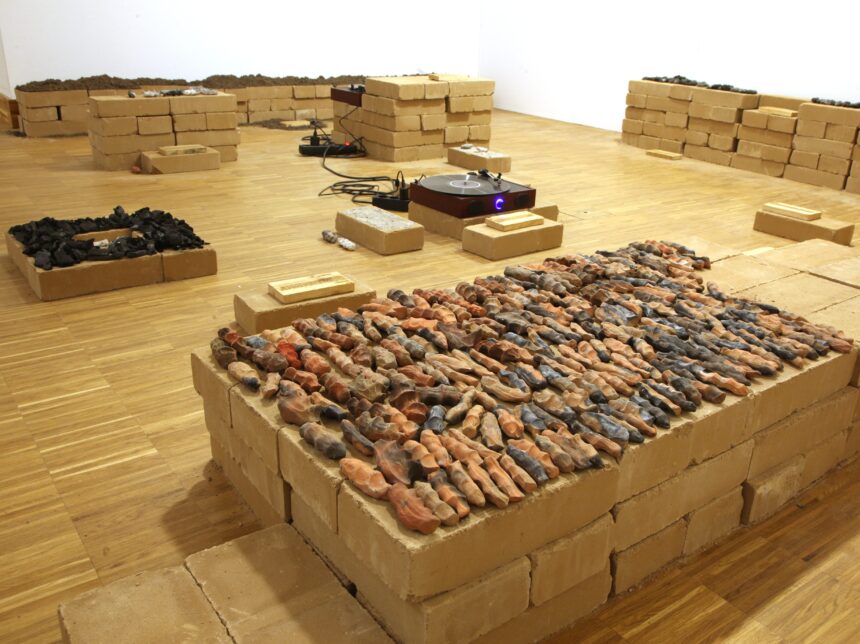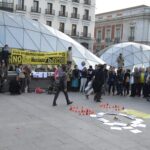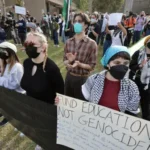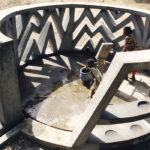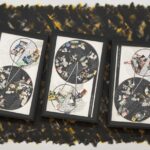UMHLABA! The World!
Nkule Mabaso
UMHLABA! The word’s meaning expands and contracts. Yet it retains its essence, whatever the extent of the shape it takes. Umhlaba wami! Since I cannot own the world, the word’s meaning contracts. My land! Umhlaba wethu! It then expands. If a piece of land can only be mine, and yet the world belongs to us all, then a country can only belong to more than me, but fewer than us all. Umhlaba expands from ‘my land’ into ‘our country,’ in a geographical space that borders other countries. Ilizwe is its more legal, less resonant form. It is a beautiful word that can give comfort or discomfort to those whose identities are shaped by the size of the umhlaba they wish to be identified by and with.[1]
-Njabulo S. Ndebele
On my drive home the other night, I turned on the radio and channel flipped to a classical music radio station. I was hoping to escape the usual discussion and just have some soothing music that would cover the thirty-minute drive home. I caught the tail end of a Tchaikovsky Concerto and decided to not change the channel when the host and his call in expert came back on the airwave. The host was describing how earlier in the day he had been watching BBC Africa, or some similar 24-hour news channel, and they did an excerpt on the outlook for South Africa. The country having recently teeter-tottered near junk status, a change in presidents, and now dealing with alarmist reactions to the land reform policies proposed at the Nasrec Conference for the redistribution of land.[2]
While watching this broadcast, the host felt uncomfortable at hearing the distress and anger from the protagonists who were being interviewed. Worse yet, the host was distressed at the visible anger of the interviewees. For the host, all of this was bad marketing, and he likely could not help but wonder what an investor watching the program and seeing the visceral anger (of what we can assume are black protagonists) might surmise about the prospects of the country. The host relayed how it was surprising that people were so angry about the land situation, but as a saving grace, he was sure no investors were looking at South Africa because they had their hands full with Trump.
The expert on the line laughingly agreed that yes, indeed, it was a saving grace that the world has Trump, and other countries can get on with trying to get on. The expert went on to explain he is not popular at dinner parties because of his contrarian economics that advocate for a devalued Rand, because this somehow would be good for the country, if only someone would hear him out. But the segment ended. An advertisement came over the airwaves.
Land restitution is a pathway to justice. You would not be remiss if you wondered, how has this pivotal issue suddenly become a tipping point? The crisis is centuries in the making, and the dispossession of land by the colonialists was legislated in 1913 through the Natives Land Act. Resistance to it was swift and immediate, with Sol Plaatjie penning his monumental text Native Life in South Africa three years later in 1916. In the next few decades more Draconian legislation was passed in the buildup to legal Apartheid. The 1913 Land Act was tightened by the Natives Urban Areas Act of 1923, which allowed local authorities to regulate and control the so-called influx of Africans from the reserves into the urban centers. These were anchored by the 1936 Native Trust and Land Act which declared rural areas settled by Africans in reserves as trust land. This was further cemented by the Black Urban Areas Consolidation Act of 1945. These dispossession laws were buttressed by other laws regulating social behavior.
In 2013, the centennial of the Land Act of 1913, Paul Wienberg, Bongi Dhlomo-Mautloa, David Goldblatt and Pam Warne curated the exhibition Umhlaba. The exhibition encompassed an extraordinary collection of historical and contemporary photographs that spoke to the power of land as a significant material and symbolic resource in the lives of individuals and communities. The curators drew together a compelling set of images of people, land and place that spans more than 100 years, with a focus on the century since the passage of the notorious Natives Land Act. The images, mostly documentary style, reveal the emotiveness of the engagement with the land, and the aspects of life that are affected by it, from the displaced to the migrant forces that mine the land as seen in the photographs of Santu Mafikeng.
The iconic opening sentence of Sol Plaatjie’s Native Life in South Africa still rings true today: “Awaking on Friday morning, June 20, 1913, the South African Native found himself, not actually a slave, but a pariah in the land of his birth.”[3] While the Native Land Act was repealed in 1991, its effect on the country’s landscape is still evident. As Lungisile Ntsebeza writes:
Today’s debates about land reform in South Africa and its failure tend to revolve around section 25 of the South African Constitution: the property clause. This clause attempts to strike a balance between recognizing existing property rights historically held by whites, while at the same time recognizing the need to return land to the indigenous people who were dispossessed of their land and property.[4]
Land is linked to power—politically, socially and culturally. Section 25 essentially prioritizes the government’s duty to enact land reform in order to redress the results of past racial discrimination. Property within this clause is not limited to land, and the proposal for land expropriation is valid and within the constitution because property rights are subject to judicial clauses, meaning property may be taken for public purpose or public interest, and is subject to compensation. The slow process of land distribution has not yielded equitable results over the last 24 years.
Dineo Seshee Bopape’s artistic practice employs documentary aesthetics to engage with the question of geographic situatedness and meditations on the symbolism of soil and the earth, as direct abstractions of the land. For example, her emotive and evocative site-specific installation titled :indeed it may very well be the ___________itself, created for the Sao Paulo Biennale in 2016, uses earth to speak directly to the issue of land and landlessness. On the surface of the installation are indentations and holes filled with shells, stones and gold, alluding to childhood games. According to the Biennale’s website, “The work is a contemplation of ideas and forms of containment and displacement, occupation and hosting, as well as the implied sociohistorical politics of landlessness. The holes becomes voids, spaces to be filled with rose petals, a candle, sage, clumps of clay with impressions of her hands, charcoal and feathers.”[5] The installation is a quiet protest composed of large masses of compacted soil that dictate movement in space, and bring to mind the notion of the earth as a container of histories.

Over the past century the resistance against dispossession became a call, a cry, a howl, and is presently a raging. Let’s imagine that you flew into South Africa today, and on your way from the Cape Town airport to your hotel, your Uber driver had the radio turned on. Between pop songs, the radio host speaks about land expropriation without compensation, and radio listeners call to weigh in on the topic. After this, the news comes on, and the reporter rattles off the sites where land grabbers are engaged in a standoff, as law enforcement attempts to “control the situation.” Meanwhile, you drive through squatter camps lining the highway towards the city. You will leave that area behind and arrive at your destination and never encounter that side of the mountain again, except when you are headed back to catch your return flight. And then you will experience the shock and disorientation, that somehow you have had a great holiday, in the midst of all this social devastation.
Nkule Mabaso graduated with a Fine Arts degree from the University of Cape Town (2011) and received a Masters in Curating at the Postgraduate Programme in Curating at ZHdK, Zürich (2014). She has worked as Assistant Editor of the journal OnCurating.org and founded the Newcastle Creative Network in Kwazulu Natal. As an artist, she has shown work in Denmark, Switzerland, South Africa, Germany, and Zimbabwe. She has curated shows and organized public talks in Switzerland, Malawi, Tanzania, and South Africa. Currently she works as a curator of the Michaelis Galleries at the University of Cape Town. She is a PhD Candidate at Rhodes University as part of the research team SARChI Chair (Geopolitics and the Arts of Africa). Her research focuses on the Kwazulu Natal interior and calls for the development of context specific policy that will provide the strategies for the mechanization of the economic potential of culture in the context of small cities and large towns in South Africa.
Notes
[1] Njabulo S Ndebele, 2013. “Umhlaba unowned – Can it ‘own’ us all who live in it?” In Umhlaba 1913-2013, images from the exhibition commemorating the centennial of the Natives Land Act of 1913 by Paul Weinberg, 2015.
[2] ANC, 2018. Report and Resolutions Of The 54th National Conference, available at http://www.anc.org.za/sites/default/files/54th_National_Conference_Report.pdf. On Land Redistribution, Clause 15: Expropriation of land without compensation should be among the key mechanisms available to government to give effect to land reform and redistribution.
[3] Sol T. Plaatjie, 1916. Native Life in South Africa, Before and Since the European War and the Boer Rebellion, Fourth Edition, 1988, p. 16. Available at https://www.sahistory.org.za/sites/default/files/Native%20Life%20in%20South%20Africa_0.pdf.
[4] Lungisile Ntsebeza, This Land Is Our Land. May 3, 2018. Available at http://foreignpolicy.com/2018/05/03/this-land-is-our-land/.
[5] “Dineo Seshee Bopape,” 32nd Bienal de São Paulo, 2016, http://www.32bienal.org.br/en/participants/o/2634

